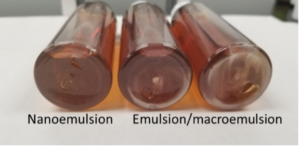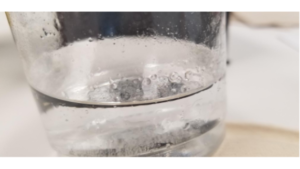One would think producing a CBD-infused beverage is easy: develop a formula, get all the ingredients ready, mix them with water, pasteurize, and bottle, the beverage is ready on the shelf for consumers to buy, like, and re-buy. Sounds simple, right? But wait, let’s see a few new headlines:
Industry watchdog gives 64% of CBD beverages an F on label claim
More Than 50% of All CBD Drinks Contain Less of the Cannabinoid Than Labels Claim
CBD watchdog finds beverage labeling inaccuracies
Vanishing CBD in beverages: Are you getting what you think you’re getting?
CBD Alcohol dying fade despite “anti-anxiety” benefits
All of those articles highlight a troubling trend for the CBD-infused beverage industry: the determined CBD contents in most beverages are below what is claimed on the label. When consumers learn they don’t get what they are supposed to get, they lose confidence and trust in this industry.
One quick explanation for the problems is that manufacturers don’t add enough CBD since there is no legislative requirement for finished product testing; therefore, there may be unethical behaviors, but don’t conclude so fast! We believe most players do business ethically, but they may not realize the CBD-infused beverage is more challenging than many think.
Analysis of the CBD content in a beverage requires a small size sample (usually in mL) representative of the whole batch or whole can, which requires one of the most critical aspects of the beverages: the CBD or cannabinoids have to be homogeneously distributed in the beverage. It is easy for water-soluble ingredients like vitamin C to be homogenous, but for hydrophobic CBD or other cannabinoids, it poses a big challenge. One cannot simply add CBD oils into a beverage, mix well, and then hope it can stay homogeneously in the beverage during its shelf-life. The only way to achieve homogeneity is through emulsion or encapsulation.
In our opinion, the better choice is an emulsion. Simply put, CBD emulsion is to break CBD oil into small droplets and keep them suspended throughout the beverage homogeneously. Breakage is done by mechanical means and stabilization needs help from emulsifiers. Emulsions, without any prefix, generally refers to “macroemulsion” termed scientifically. In macroemulsion, the spherical CBD oil droplet has diameters in the range of micrometer (say 500nm to 100µm). Macroemulsion is thermodynamically unstable and has weak kinetic stability, which means the emulsion won’t last long. Its stability generally only lasts up to a couple of days until precipitation or large oil droplets are observed. The emulsion formed by using water-soluble/dispersible CBD powder fall into this category. If samples are taken for CBD analysis after the emulsions break down, unexpected results are guaranteed. Due to lack of stability, macroemulsion is not suitable for CBD-infused beverages. It is also likely the cause of the “vanishing CBD in beverages”.
To create a CBD-infused beverage with desired long-term stability, nanoemulsion is the way to go. From its prefix, one can tell the spherical CBD oil droplet in nanoemulsion has diameters in the nanometer range (usually 5 to 100 or 200nm). Nanoemulsion is a kinetic stable system prepared by high shear force mixing with the assistance of emulsifiers, resulting in much better product consistency, stability, and longer product shelf-life than (macro)emulsion (see picture below). Marcoemulsion is usually cloudy, while nanoemulsion can be transparent or translucent.
 .
. 
Because CBD droplet is covered by water molecules consistently over its shelf-life, the chance it cumulates on the hydrophobic material (see picture below) used for beverage container inner lining is very low. The small portion sample taken from nano-emulsion will have the same concentration as the rest of the beverage and therefore reflect the real CBD amount added to the product. No more magically vanishing. In general, concentrated nano emulsion (like Hemprise 5% CBD nanoemulsion) has a shelf-life of at least one year. It has similar or longer shelf-life after diluted into beverage. What else makes nanoemulsion the best choice for beverage application is its versatility: it can be used as an independent ingredient to be added into any beverage during the bottling stage because it is not sensitive to dilution, temperature or pH change.

Just wait, have you heard of microemulsion? Of course, it will be another scientific topic, stay tuned. By the way, nanoemulsion is called miniemulsion by some.
For More Information about our HempNANO visit:

